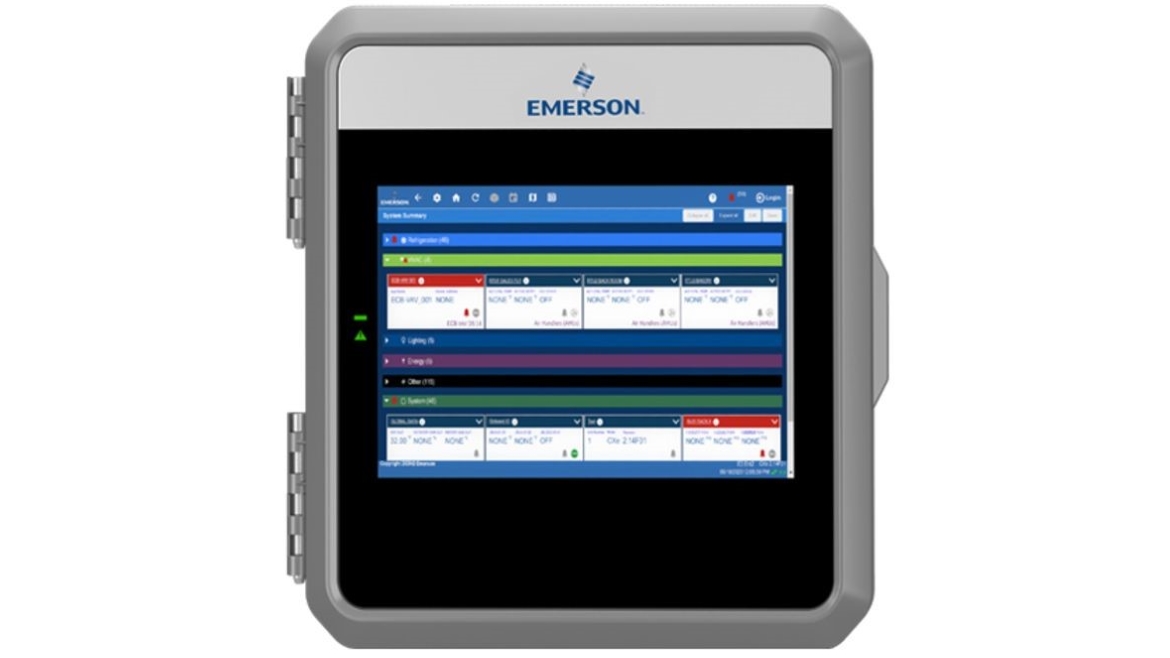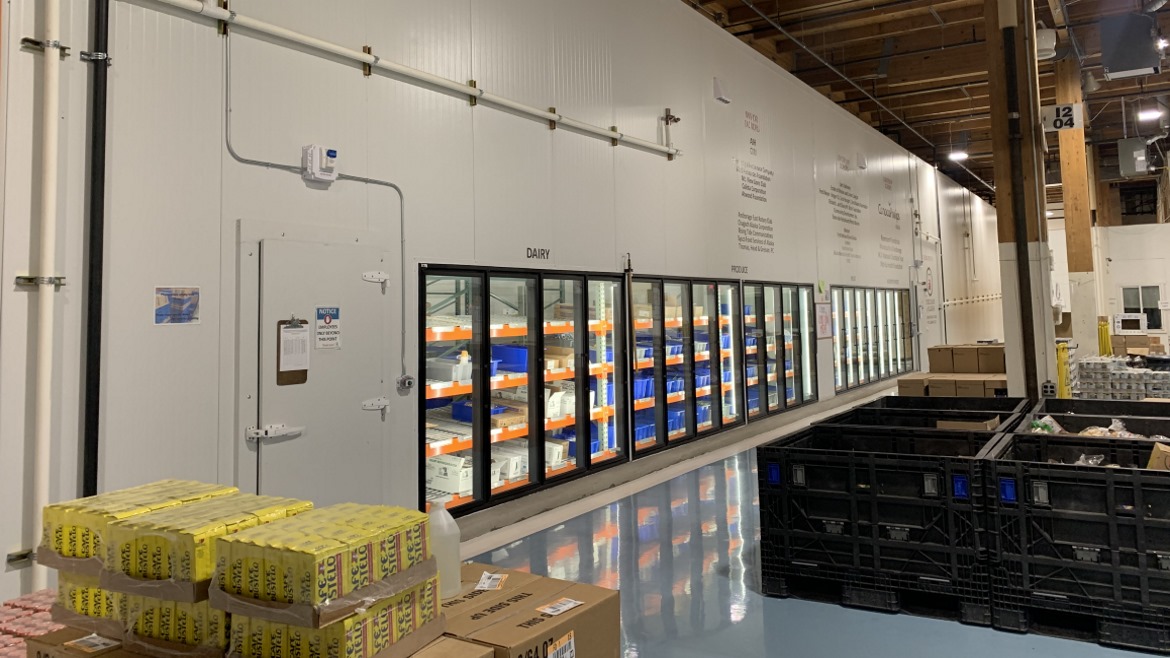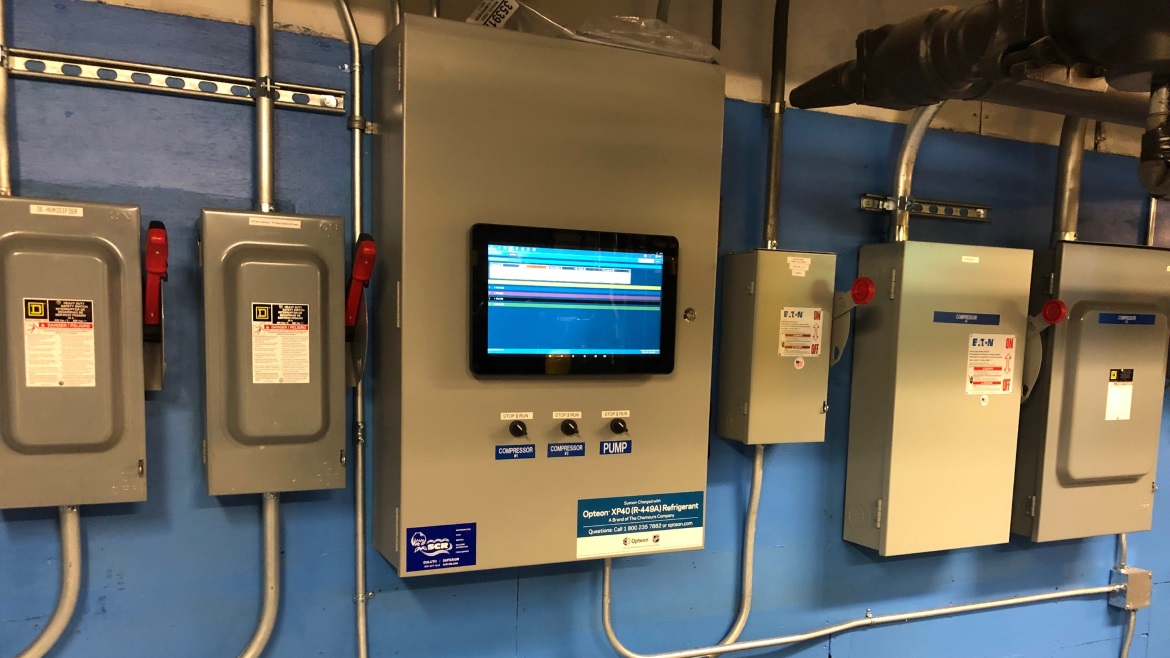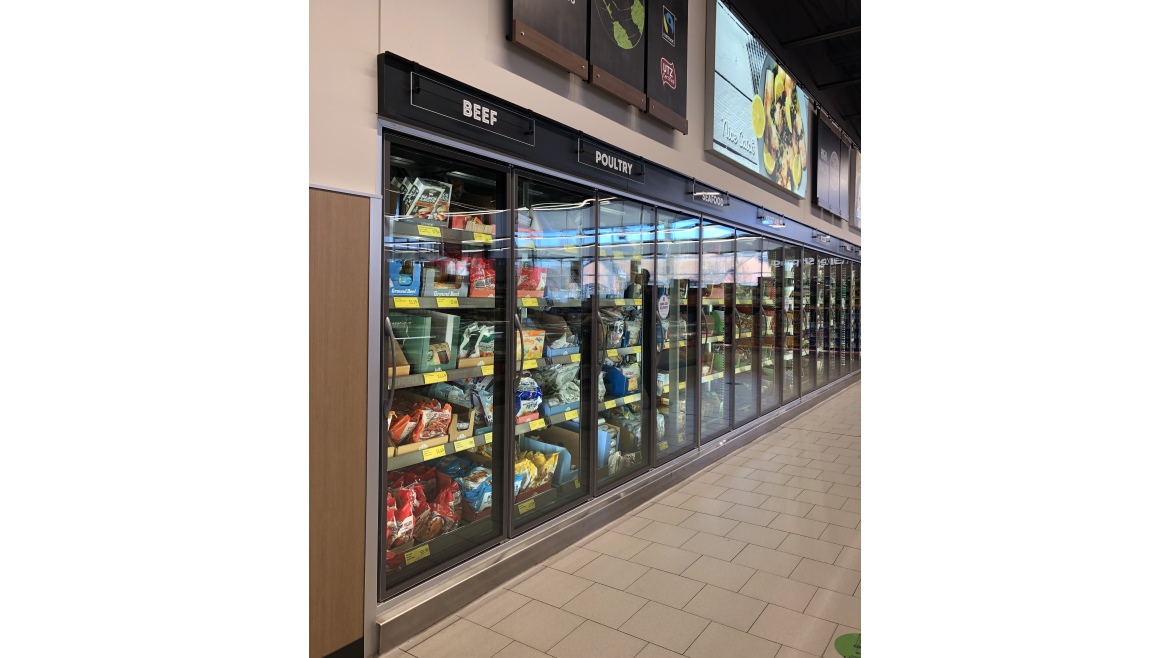Case Study
In Dire Conditions, Emerson Donated its E3 Controller System to the Food Bank of Alaska
Emerson’s E3 controller allowed the Food Bank of Alaska to become modernized with minimal repairs and upgrades, even in the harsh climate.
_Lead-Image_IMG_9442.webp?t=1688581006)
Photo Credit: Emerson
When COVID-19 began spreading across America, the Food Bank of Alaska in Anchorage quickly became overwhelmed. The organization had been making the best of outdated equipment in a remote location for many years, often dealing with breakdowns that led to significant losses of perishable food items. But, as the pandemic brought many longstanding issues to a head, it became clear that a permanent solution needed to be found.
Fortunately, a local retailer had moved a few years earlier, leaving a vacant building well-suited to the food bank’s growing needs. Using funds from the Cares Act, along with corporate and private support, a plan was launched to move the operation into a larger facility with more modern equipment.
 Photo Credit: Emerson
Photo Credit: Emerson
Emerson donated a control system equipped with the all-new E3 controller to monitor and maintain the food bank’s combination walk-in cooler/freezer as part of this effort. The e3 enables on-site or remote access to two outdoor condensing units (OCUs), four indoor evaporators for the cooler; three OCUs and six indoor evaporators for the freezer; plus two leak-detection systems. This set-up builds on the proven success of the industry-standard legacy E2, adding a user-friendly, web-accessible interface, states the company.
Tony Losey, vice president of construction operations for Arctic Refrigeration and Air Conditioning, recalls how the project began, “When we went through the original bidding process with the food bank, all they had was donor money. The budget was very limited, and we had already donated some of our time and materials. At that stage, the plan was just to provide manual controls. I felt that was inadequate for the size of the facility, so I figured maybe I could give a shout-out to Emerson to see if they could help out. We’re small up here in Alaska, but this far away, a little success goes a long way.”
E3 Delivers Next-Generation Controls
The new E3 controller builds on the foundation of the E2, adding a built-in, touch-screen display and integration with Emerson’s supervisory control software. This upgrade delivers a user-friendly, web-accessible interface that enables control over critical building and refrigeration systems, including compressor groups, condensers, walk-in units, HVAC and lighting systems—all while providing an exact drop-in replacement for existing E2 controllers.
 Photo Credit: Emerson
Photo Credit: Emerson
Costly Maintenance in a Harsh Environment
In the past, the isolated location of the food bank—far from experienced technicians—and the age of its equipment made service calls very costly. As a result, technicians were only asked to make the trip when there was a critical need.
“We were on a bi-annual general checkup schedule,” Losey says. “But with their aged equipment, we could only do minimal maintenance before going into drastic repairs. Otherwise, the only time we would show up was if they had a mechanical error. They had an old wireless alarm system. But if they weren’t alerted before the end of the day, they were coming in the next day to a 40-degree box. Whatever food was in there had to be thrown away, and all they could do was hope more donations would come in that week.”
As if losing its food supply wasn’t bad enough, Alaska’s frigid climate often compounded the usual challenges of repairing an outdated system.
“With the severity of their old equipment, there was always the risk of its materials finally degrading to the point that could cause a refrigerant leak,” says Losey. “Up here in Alaska, the cold weather differences can create a lot of head pressure and oil return issues. With the old building, you just had to go through your manual paces. You’d go out there, put your manual gauges up, and spend a good half-hour to an hour just to understand the basic pressures — or if the units were even running. As silly as that seems, some days you’d have to tromp through a foot of snow just to access the units.”
Warming Up To Remote Technology
Installing an E3 controller in the new Food Bank of Alaska building saved Losey and his team a lot of tromping through the snow. Based on his experience with the organization, he was careful to run temperature sensors through all of the locations that were likely to be critical to preserving the organization’s valuable inventory.
 Photo Credit: Emerson
Photo Credit: Emerson
“With E3 and site supervisor, you can simply go to one source and gain a lot of information on what your unit’s actually doing,” Losey explains. “Now if we get an alert, we’ll know specifically which evaporator will be causing the issue. Just identifying that should shorten up the length of time for the initial technician.”
That time is money in many Alaskan locations, where flying a technician to a remote area can reportedly cost $2,000 to $3,000 a day. With the E3 controller, Losey’s team can quickly determine whether an issue can be fixed easily or needs immediate attention.
“If you can get an internet connection, you can view your facility,” he states.
Visibility at a Glance
The floor plan feature of the E3 controller allows managers and contractors to see the big picture. You can easily access views of your store’s floor plans to monitor each device, locate active alarms, and streamline your team’s prioritization and response.
- Monitor multiple devices in one view.
- Provide 2D/3D visualizations of equipment layout.
- Quickly identify alarms at the asset/fixture levels.
- Accelerate issue resolution.
 Photo Credit: Emerson
Photo Credit: Emerson
Cost Reductions Offer Food For Thought
Losey believes the E3 controller will create significant savings for the Food Bank of Alaska. “I’ve seen an overall improvement in care just in the last six months,” he explains. “I think the E3 will reduce the initial cost of any maintenance call, simply because the technician won’t have to go to multiple locations throughout the facility to track down several issues.”
Losey and his team saw a result like this quickly during one of their first service calls to the new location. When a clogged drain triggered an alarm, the food bank was able to notify Arctic Refrigeration and Air Conditioning before it caused a serious compressor issue. A service call that might have run to thousands of dollars in the past was resolved in less than an hour, states Emerson.
“What used to take us half an hour to an hour can now be done in 10 to 15 minutes—if we even need to go up there,” he says. “Say that drain is clogged and causes a unit to freeze up again. Now you can sit at a screen and manually defrost the unit without having to go anywhere. Problem solved.”
 Photo Credit: Emerson
Photo Credit: Emerson
Looking for a reprint of this article?
From high-res PDFs to custom plaques, order your copy today!






